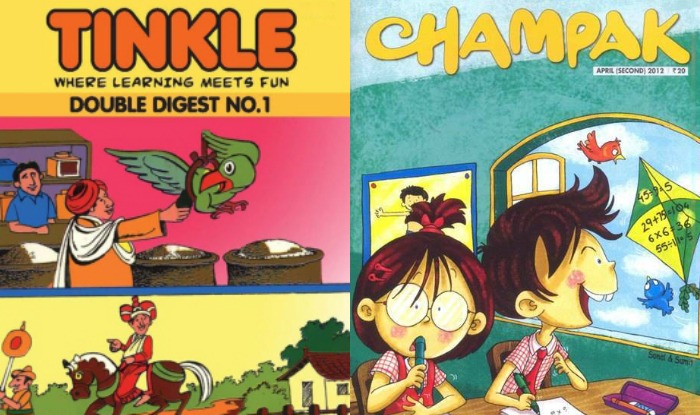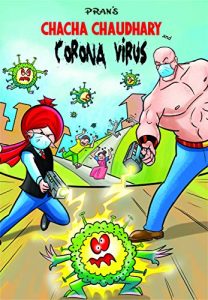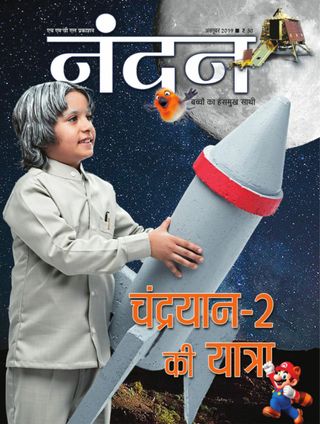Of Chacha Chaudhary, Champak & childhood

Children’s magazines had been a constant companion of young readers in India, till about early years of the current millennium
Remember superhero Sabu? The alien from Jupiter who was Chacha Chaudhary’s constant companion? Or the simpleton Supandi in Tinkle? Or the notorious but intelligent Cheeku from Champak? All these and many more characters from different children’s magazines had been a constant companion of young readers in India, till about early years of the current millennium.
“Evidently, between Tintin and Asterix, there were many faithful patrons of Chacha Chaudhary, Amar Chitra Katha, Champak and so forth. However, these Indian comics and magazines remain fairly alien to children who, unsurprisingly, exchange Harry Potter trivia like greetings,” Gulshan Rai, founder of Diamond Comics, which is home to brands like Chacha Chaudhary, Pinki, and Billoo, tells Media India Group.
“It is no surprise that with the expansion of the internet and unlimited data availability, the readership of children’s magazines has suffered beyond measure in the last decade. There has been a sudden decline in the numbers since when we launched these characters but the effect of nostalgia is such that if you go to any railway station or bookstall, you will find our comics on the stands. We are maintaining the grace of all Diamond characters,” he adds.
Nostalgia attached with the magazines
There are certain people who ritualistically pick up a Pinki issue before they step into a train coach and that has not changed, says Awadhesh Kumar Jha, an associate editor of Champak, a children’s magazine by Delhi Press. “Our print magazines are doing well in tier-2 cities. Champak is published in multiple languages and our network is still, fairly big. However, due to digitisation, our readers have shifted mediums too,” he explains. It is no surprise that with the advent of technology, parents are handing down tabs and kindles to inculcate reading habits in their kids. Therefore, Indian magazines, following suit, have launched their own apps and digital subscriptions to keep up.
“For children born in the early 1990s, these magazines were more than stories enlivened by illustrations. It was more of a relationship which progressed with every new edition,” says Reena L Puri, editor of Amar Chitra Katha. “So many people in their 20s and 30s tell me that when they got married and moved, they moved with their collection of Amar Chitra Katha,” she adds.
While ACK was launched with a mission of educating the young ones about Indian culture and heritage, Tinkle was for the young school child to tell his own stories. “Mr Pai, said ‘Keep God out of Tinkle’,” recalls Puri, with a little snicker. Anant Pai was the founder of Amar Chitra Katha. Tinkle was acquired by ACK Media in 2007.
“Whether on a train ride to one’s grandparents’ house at the start of summer vacations or at home spending afternoons lazing indoors, Champak, Nandan and other such magazines during the train journeys and especially during the summer vacations were a must-have for me,” says 35-year-old Preeti Bala, a Delhi-based school teacher.
“For a lot of us, these magazines have been part of our growing up years. They were entertaining and enlightening besides being simply funny. We used to read even months-old editions of these because we loved these! Those days are gone now,” she adds, “I do not see my children waiting eagerly for monthly magazines anymore. They look for anything and everything online now.”
Lockdown boosted readership among children
While Bala’s words resonate with most adults that grew up reading these magazines, Paresh Nath, editor of the Delhi Press that publishes 36 magazines in 10 languages across the country, including fortnightly children’s magazine Champak in English, Gujarati, Hindi, Kannada, Malayalam, Marathi, Tamil and Telugu, feels that the pandemic and ensuing lockdowns in India has boosted the subscription of their magazines.
“Like all others, we were also facing the brunt of digitalisation and children not reading enough. But since the mid of the Covid-19 lockdown in the country, from about May 2020, our digital subscriptions increased manifold. Our digital magazines saw a growth of about 56 pc, especially for Champak,” he says.
Nath further explains that as schools and tuitions classes closed down for children, parents started to get their children to subscribe for some kind of comic books of magazines so that their reading habit and general knowledge does not take a back seat. He also says that children themselves, in absence of new television shows, turned towards reading magazines that entertained, engaged and amused them simultaneously.
Not all went well for children’s magazines
Though 81-year-old Delhi Press witnessed a growth during the lockdown, not all magazines could manage to survive the economic collapse that followed.
As the coronavirus pandemic wreaked havoc on the media and publishing industries in India, HT Media decided to discontinue the publication of Nandan, one of the most successful and oldest children’s magazines. In their press release last year in August, the team behind Nandan wrote: “After more than 50 years of providing dedicated companionship and service to Indian children, the magazine is closed.”
“Due to a drastic drop in sales in the 2000s, HT Media had sold Nandan to its subsidiary Hindustan Media Ventures in 2009,” former editor of Nandan, Kshama Sharma tells Media India Group.
“The sales started dropping after the last decade of the 20th century. But the pandemic was like the final test that Nandan failed. Many such magazines got closed. Nandan was the only children’s magazine at the national level that continued for over 55 years, that is partly because of K.K. Birla, the owner of the HT Media group, had some special emotional attachment with it,” says Sharma.
Modernisation of medium & content – the key to survival
While many are still mourning the closing down of their favourite magazines, Nath of Delhi Press says that modernisation of the content in the magazines and altering the medium to share content is the only way to survive the falling readership and economic losses that children’s publications have been facing.
“The technique to stay appealing to such young readers in the fact that magazines should a combination of the traditional and the modern in its stories, poems, interactive columns and educational content. Along with that, children’s magazines should also upgrade their distribution platforms and be available for digitally for the young children these days,” he adds
He also talks of moving away from stories that stress upon strict moral values and focus on entertainment as the key to survive. “All kinds of entertainment is available to children these days online. To make sure that they click on your magazine, you have to keep them engaged with modern games and interactive puzzles, stories and characters in the magazine. Only teaching them morals will not do the magic,” says Nath.
While the children in metropolitan cities might not be nostalgic about these, he says “I am sure that many in the tier two cities and in most villages, children are still in might still be fiercely protective of their Tintin, Champak, Pinki and there is hope to survive in the innocent world of children in which Chacha Chaudhary is still the smartest man, Cheeku gets work done and Billoo is the Indian archetype of Archie.”











